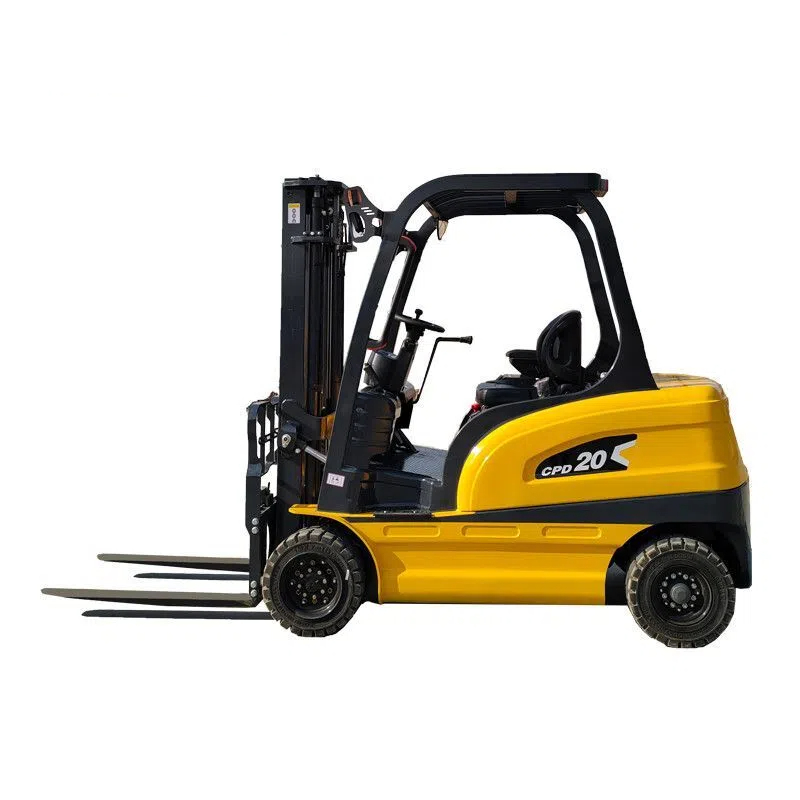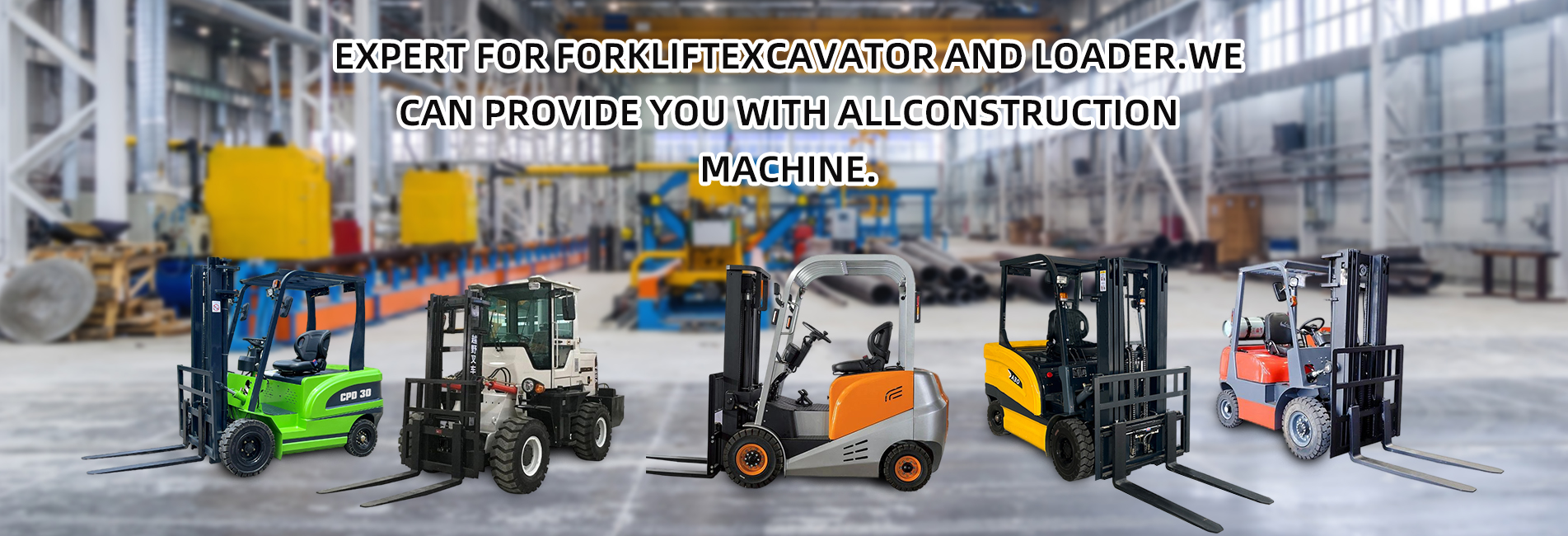The Distribution of the Global Electric Forklift Market Size Across Different Industries
The distribution of the global electric forklift market size across various industries exhibits distinct structural characteristics, driven not only by the demand for industrial upgrading but also influenced by regional policy differences and technological pathway variations. The following analysis is conducted from three perspectives: industry dimensions, regional differences, and special scenarios.

I. Core Industry Distribution: Dual Drive from Warehousing & Logistics and Manufacturing
Warehousing and Logistics Industry
- Global Share: Accounting for approximately 50%, it is the largest application sector for electric forklifts. The exponential expansion of e-commerce logistics serves as a core driving force. The global volume of e-commerce parcels has increased from 61 billion in 2019 to 120 billion in 2025, directly boosting the annual demand growth of narrow-aisle forklifts by 35%. For instance, the forklift density in Amazon's North American warehouses reaches 5.2 units per 10,000 square meters, three times that of traditional warehouses.
- Segmented Scenario Differentiation:
- E-commerce Sorting Centers: Narrow-aisle forklifts (with a load capacity below 3 tons) account for over 70%, requiring equipment to have high mobility and intelligent scheduling capabilities. The AGV forklifts deployed in JD Logistics' Asia No.1 Warehouse achieve multi-vehicle collaboration through 5G + AI, increasing sorting efficiency by 200%.
- Cold Chain Logistics: The penetration rate of electric forklifts in low-temperature environments is rising rapidly. In China's cold chain logistics sector, the demand for electric forklifts accounts for 11.2%, and Ningbo Ruyi holds a 70% share in the -30°C ultra-low-temperature forklift market.
- Ports and Bulk Logistics: The demand for high-tonnage electric forklifts (with a load capacity above 10 tons) has grown significantly. The 30-ton electric forklifts deployed at CATL's Yibin base replace traditional internal combustion equipment for lithium battery raw material handling, achieving zero emissions in the workshop.
Manufacturing Industry
- Global Share: Representing around 35% globally and 48% in the Chinese market, it is the second-largest application field for electric forklifts. The demand is driven by the automation upgrading of industries such as automobile manufacturing and electronic information. For example, Tesla's Shanghai Gigafactory adopts an intelligent logistics system composed of 120 electric forklifts, which collaborates with robots to handle battery modules, reducing the production line cycle time by 18%.
- Segmented Field Characteristics:
- Automobile Manufacturing: Electric forklifts account for over 60%, mainly used for parts handling and production line material distribution. In the intelligent logistics system of BYD's Xi'an factory, electric forklifts seamlessly connect with AGVs, improving order processing efficiency by 40%.
- Electronic Manufacturing: The demand for dedicated electric forklifts for cleanrooms has surged, requiring equipment to feature low noise and zero dust emissions. The semiconductor-grade electric forklifts deployed in Foxconn's Zhengzhou Park control the particulate concentration below 0.1mg/m³ through HEPA filtration systems.
- New Energy Industry: The demand for electric forklifts in lithium battery production has experienced explosive growth. In the cell workshops of enterprises like CATL and BYD, the density of electric forklifts reaches 8 units per 10,000 square meters, four times that of traditional manufacturing industries.
Retail and Food Processing Industry
- Global Share: Making up about 10%, this industry has a strong demand for clean and low-noise equipment. For example, all of Walmart's North American distribution centers use electric forklifts, which operate at a noise level below 65 decibels, meeting the requirements of food hygiene regulations.
- Technology Upgrading Trend: Intelligent sorting forklifts have become a new growth point. The vision-guided forklifts deployed in Yonghui Supermarket's intelligent warehouses achieve an order accuracy rate of 98% and reduce labor costs by 50%.
II. Regional Market Differences: Policies and Industrial Structures Shape the Distribution Pattern
Asia-Pacific Region
- Chinese Market: Dominated by the manufacturing and logistics industries, which together account for 85%. The industrial clusters in the Yangtze River Delta and Pearl River Delta contribute 65% of the national procurement volume. In major manufacturing cities such as Suzhou and Dongguan, the single-city demand growth rate exceeded 25% in 2024.
- Southeast Asian Market: Driven by the return of manufacturing and the expansion of e-commerce, the penetration rate of electric forklifts is expected to reach 38% in 2025. In electronic assembly plants in Vietnam and Thailand, electric forklifts account for over 40%, and Chinese brands hold a 60% share in the mid-to-low-end market.
European Market
- Leadership in Cold Chain and Explosion-Proof Fields: The EU's strict emission regulations have promoted the application of electric forklifts in food cold chain (accounting for 22%) and chemical explosion-proof (accounting for 15%) scenarios. BASF's Ludwigshafen Chemical Plant in Germany uses ATEX-certified electric forklifts to achieve zero-risk operations in flammable and explosive environments, and the cost of alternative solutions is three times higher.
- Differentiation in Technological Pathways: Lithium battery forklifts account for 80%, and the penetration rate of hydrogen fuel cell forklifts in scenarios such as ports has exceeded 5%. Enterprises like Toyota and Hyundai are accelerating the commercialization of this technology.
North American Market
- Dominance of E-commerce Logistics: The warehousing and logistics industry accounts for over 60%. The full electrification transformation plans of enterprises such as Amazon and Walmart have driven the annual demand growth of high-endurance forklifts (with an endurance of more than 8 hours) by 28%.
- Manufacturing Upgrading: In the intelligent factories of automakers like Tesla and General Motors, electric forklifts work in collaboration with industrial robots, increasing equipment utilization to 85%, which is 30% higher than that of traditional factories.
III. Breakthroughs in Special Scenarios: Technological Innovation Unlocks Incremental Space
Cold Chain Logistics
- Breakthroughs in Low-Temperature Technology: In a -30°C environment, electric forklifts can operate stably through battery insulation technology, while the startup failure rate of diesel forklifts exceeds 30%. In China's cold chain logistics sector, the demand for electric forklifts accounts for 11.2% and is expanding at an annual growth rate of 40%.
- Equipment Upgrading Trend: Electric forklifts with rapid defrosting functions have become mainstream. For example, the cold chain-specific models of Hangcha Group reduce the defrosting time from 4 hours to 30 minutes, increasing operational efficiency by 80%.
Explosion-Proof and Chemical Industries
- Technical Certification Threshold: Electric forklifts certified by the EU's ATEX and North America's UL are increasingly used in chemical and pharmaceutical fields. The explosion-proof models of Linde Forklifts have a penetration rate of 70% in the workshops of enterprises such as BASF and Bayer.
- Cost Comparison: The price of explosion-proof electric forklifts is 20%-30% higher than that of internal combustion forklifts, but their full-life-cycle costs (including maintenance and environmental fines) are 40% lower.
Semiconductor and Electronic Manufacturing
- Dedicated Equipment for Cleanrooms: Equipment is required to meet electrostatic discharge (ESD) standards on the surface. For example, the semiconductor-grade models of BYD Forklifts control the electrostatic voltage below 100V through special coating treatment, meeting the ISO Class 5 cleanroom standards.
- Intelligent Upgrading: The application of vision-guided forklifts in wafer handling scenarios achieves a handling accuracy of ±2mm, which is 10 times higher than that of manual operations.
IV. Future Trends: Technological Iteration and Business Model Innovation Reshape the Market
Directions of Technological Breakthroughs
- Battery Technology: Progress has been made in the testing of solid-state batteries. Silicon-carbon anode materials will increase the energy density to 280Wh/kg, with the endurance exceeding 12 hours. Wireless charging technology can reduce the investment cost of charging facilities by 40% and has been piloted in high-end models of Toyota and Jungheinrich.
- Intelligent Integration: The penetration rate of unmanned forklifts is rising rapidly. The global market size is expected to exceed 1 billion US dollars in 2025, with China accounting for 45%. For example, the unmanned forklifts of SIASUN achieve a 98% order accuracy rate in the warehousing field of auto parts.
Business Model Innovation
- Rental and Sharing Economy: The global forklift rental market size is expected to reach 34 billion US dollars in 2025, with electric forklifts accounting for 67%. The "pay-per-hour" model of R3 Logistics in the United States increases the customer's equipment utilization rate to 85% and reduces costs by 28%.
- Battery Bank Model: NIO Power has launched a "vehicle-battery separation" solution. Electric forklift users can rent batteries on a monthly basis, reducing the initial investment by 40% while enjoying the full-life-cycle battery maintenance service. This model is being rapidly replicated in the Southeast Asian market.
V. Data Verification and Industry Benchmarks
Market Size Comparison
- Chinese Market: In 2024, the market size of electric forklifts in China reached 10.29 billion yuan, with the manufacturing industry accounting for 48% (6.17 billion yuan) and the logistics industry accounting for 37% (4.75 billion yuan).
- Global Market: In 2024, the warehousing industry accounted for 50% (approximately 11.85 billion US dollars), the manufacturing industry accounted for 35% (approximately 8.29 billion US dollars), and the retail and food processing industry accounted for 10% (approximately 2.37 billion US dollars).
Comparison of Technical Indicators
| Industry | Typical Scenario | Electric Forklift Density (Units/10,000 m²) | Endurance Requirement (Hours) | Intelligent Penetration Rate |
|---|
| E-commerce Logistics | Sorting Center | 6-8 | ≥8 | 70% |
| Automobile Manufacturing | Assembly Workshop | 8-10 | ≥6 | 60% |
| Food Cold Chain | Low-Temperature Warehouse | 4-6 | ≥6 | 40% |
| Semiconductor Manufacturing | Cleanroom | 10-12 | ≥4 | 80% |
Conclusion
The market distribution of electric forklifts is characterized by "dominance of core industries, significant regional differences, and breakthroughs in special scenarios". As the two major pillars, the warehousing & logistics and manufacturing industries together account for over 80%. Meanwhile, special fields such as cold chain, explosion-proof, and semiconductors are unlocking incremental space through technological innovation. In the future, with breakthroughs in technologies such as solid-state batteries and hydrogen fuel cells, as well as the popularization of business models like rental and sharing, electric forklifts will evolve from an "alternative option" to the "optimal solution", continuously reshaping the industrial pattern of global material handling equipment.



